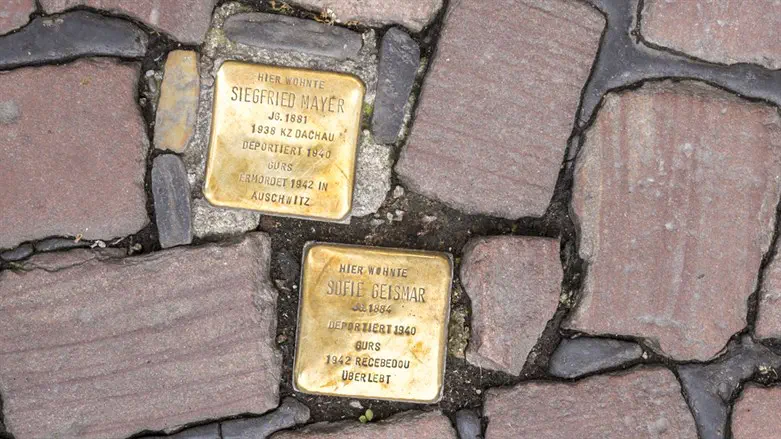
The first “stumbling stone” or stolperstein in the UK was unveiled in Golden Square in the Soho section of London, dedicated to the memory of Ada van Dantzig, an art conservationist who who was murdered by the Nazis after travelling to France to aid her parents.
Van Dantzig was 24-years old when she returned to mainland Europe to help her parents who were fleeing from the Netherlands to Switzerland. She was captured in France and deported to Auschwitz in 1943 where she was killed.
The stumbling stone was installed in a paved area of Golden Square in her memory. The area was where she worked on art restoration for the National Gallery, the UK Jewish News reported.
Stumbling stones are four inch concrete blocks with a brass plate inscribed with the name and date of birth and death of victims of the Nazis. Most stumbling stones are memorials for Jews who perished in the Holocaust.
The project was launched in 1992 by German artist Gunter Demnig, with the idea of creating memorials for Nazi victims at their last place of residency or work. To date, approximately 80,000 stumbling stones have been installed in pavement throughout Europe.
Van Dantzig worked as an apprentice for Helmut Ruhemann, an art restorer at the National Gallery who had a studio in Golden Square in the 1930s, before the start of World War II.
During the war, she made her way to France to find her family against the advice of others who told her it was too dangerous. Her parents were attempting to flee the Netherlands for Switzerland. In 1943, van Dantzig was arrested by the Nazis. She was murdered in Auschwitz on February 11.
